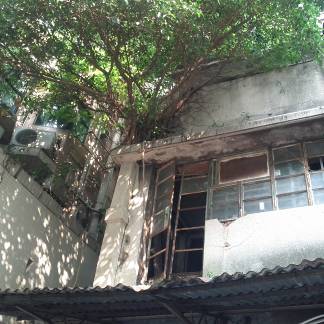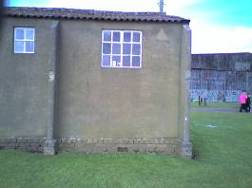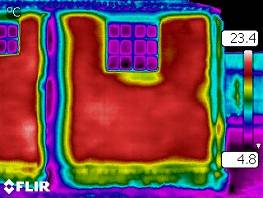Civil & Environmental Engineering
Computational structures
The computational structures group's aim is to enable the creation and development of high-performance, reliable and secure computing systems and programs that can be used to design, optimise and analyse complex structural systems.
The group is currently conducting research in the areas of inflatable structures, portal frame in fire and sustainable infrastructure design.
Current research projects
Finite element modelling of failure of defective pipelines (Dr Shangtong Yang)
Pipes are inevitable to have internal and external faults which commonly take the form of surface cracks. The surface cracks can cause premature failure of pipelines. Therefore the failure mechanisms need to be thoroughly investigated.
Our research is to develop methods to determine the stress intensity around the cracks and failure criteria for different engineering materials.
Numerical and experimental modelling of cold formed steel in fire ()
Practitioners have long argued that the design of steel portal frames in certain fire-boundary conditions is potentially unsafe. Recent numerical analyses have demonstrated that existing practices for the design of steel portal frames in fire boundary conditions can be unsafe in some conditions and over-prescribed in others.
As part of our research large-scale fire tests will be conducted on a cold-formed steel portal frame to evaluate the current design practices and validate the results of the numerical models. The results will be used to develop performance-based design recommendations for future structures that cover both conventional hot-rolled steel and cold-formed steel. The effectiveness of intumescent paints to fire protect thin cold-formed steel columns will be assessed.
Smart inflatable structures ()
The use of smart structures has recently been attracting significant interest from scientists as a platform for space-based experimentation.
The main objective of this program is to design and develop a novel concept of structure that can fulfil the requirements for the various different space missions e.g. NASA ULDB or CubeSat project.
The project is funded by a Doctoral Training Grant from the Engineering and Physical Sciences Research Council.
Sustainable infrastructure (Dr Andrea Hamilton)
This photo shows a concrete building (circa 40 years old) in central Hong Kong showing severe deterioration and plant life growing out of the structure.

Cement and concrete are by far the most widely used building materials in the world today. Global production is even higher than mild steel. As carbon dioxide (CO2) output is approximately 0.8 tonnes for every tonne of cement produced and the CO2 output from the cement industry in 2007 was 2 Gt, the carbon footprint of concrete structures must be reduced.
Preservation and retrofitting of existing structures is one way of reducing new builds. Often, design code is inappropriate for the environment and this especially applies to hot humid environments. Deterioration mechanisms such as cracking, spalling and expansion from rebar corrosion are driven by water movement through the building fabric. We use a combination of finite element modelling to model water transport through composite building materials, field surveys and laboratory experiments to understand the chemo-mechanical impact of realistic water flow through concrete.
Our goal is to find a set of practical solutions and design code updates to preserve existing structures, from factories to fine art sculptures.
The images below are of a World War 2 building at the Museum of Flight in East Fortune. The first is showing cement render delaminating and the second image is infra-red thermography used to quickly detect variation in water content.


(Photos courtesy of Dr Maureen Young, Historic Scotland)